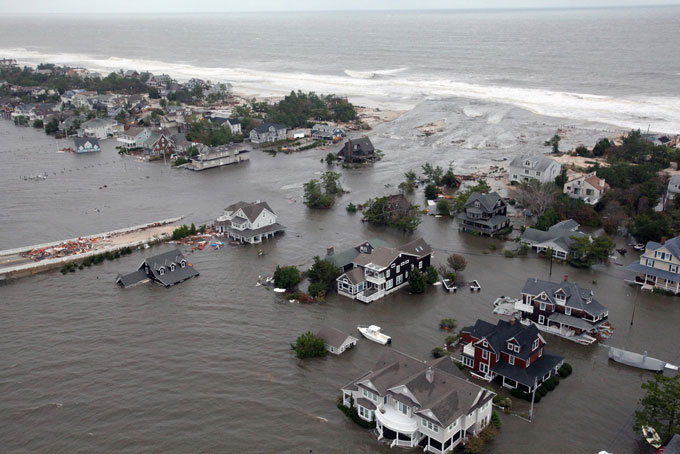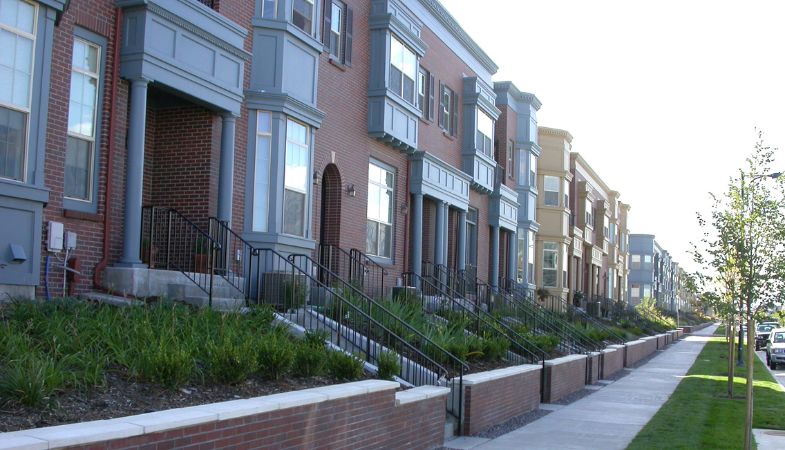Rising Sea Levels: A Catastrophe For Coastal Communities

Table of Contents
The Science Behind Rising Sea Levels
Rising sea levels are a direct consequence of global warming, primarily caused by human activities releasing greenhouse gases into the atmosphere. This phenomenon is driven by two main factors:
Thermal Expansion
As the Earth's climate warms, ocean temperatures increase. Water, like most substances, expands when heated. This thermal expansion contributes significantly to the overall rise in sea levels. Even a seemingly small increase in ocean temperature can lead to a substantial rise in sea level due to the sheer volume of water in the world's oceans. The warmer the water gets, the more it expands, leading to higher sea levels.
Melting Ice Sheets and Glaciers
The melting of glaciers and ice sheets in Greenland and Antarctica is another major contributor to rising sea levels. These massive ice formations contain enormous quantities of frozen water. As global temperatures rise, these ice bodies melt at an alarming rate, adding vast amounts of water to the oceans. This process is accelerating, leading to a more rapid increase in sea levels than previously predicted.
- Data: The rate of global sea level rise has been accelerating, averaging approximately 3.6 millimeters per year over the past two decades, according to data from NASA and the IPCC.
- Projections: The IPCC projects a sea level rise of between 0.28 and 1.01 meters by 2100, with even higher rises possible depending on future greenhouse gas emissions. These projections represent a significant threat to low-lying coastal areas.
- Sources: For more detailed information, refer to the reports of the Intergovernmental Panel on Climate Change (IPCC) and data from NASA's climate change website.
Impacts on Coastal Communities
The consequences of rising sea levels are already being felt by coastal communities worldwide, with devastating impacts on both the environment and human populations.
Coastal Erosion and Flooding
Increased sea levels lead to more frequent and severe coastal erosion and flooding events. Storms and high tides now reach further inland, damaging homes, businesses, and critical infrastructure. Coastal areas are becoming increasingly vulnerable to inundation, particularly during extreme weather events.
Infrastructure Damage
Rising sea levels directly threaten coastal infrastructure, including roads, bridges, buildings, and power plants. Saltwater intrusion can corrode infrastructure, shortening its lifespan and increasing maintenance costs significantly. This damage results in economic losses and disrupts essential services.
Saltwater Intrusion
The encroachment of saltwater into freshwater aquifers and coastal wetlands is another significant concern. This saltwater intrusion contaminates drinking water sources and harms agricultural lands, impacting food security and livelihoods. This contamination can be irreversible, leading to long-term water scarcity issues.
Displacement and Migration
As coastal areas become uninhabitable due to rising sea levels and increased flooding, populations are forced to relocate. This displacement leads to social and economic upheaval, creating climate refugees and placing a strain on resources in inland areas. The loss of homes, livelihoods, and cultural heritage is a significant human cost of rising sea levels.
- Examples: The Maldives, Bangladesh, and several island nations in the Pacific are already experiencing severe impacts from rising sea levels, with communities facing displacement and loss of land.
- Economic Costs: The economic cost of damage caused by rising sea levels is staggering, encompassing infrastructure repair, disaster relief, and the cost of relocation and resettlement.
- Visuals: Search online for images and videos depicting the effects of rising sea levels on coastal communities to witness the real-world impact firsthand.
Mitigation and Adaptation Strategies
Addressing the challenge of rising sea levels requires a multifaceted approach encompassing both mitigation and adaptation strategies.
Reducing Greenhouse Gas Emissions
The most critical step in mitigating the effects of rising sea levels is to drastically reduce greenhouse gas emissions. This requires a global commitment to transitioning to renewable energy sources, improving energy efficiency, and adopting sustainable land-use practices. Without significant emissions reductions, the problem will only worsen.
Coastal Defenses
Various engineering solutions can help protect coastal communities from the immediate effects of rising sea levels. These include building seawalls, improving drainage systems, and implementing managed retreat strategies, where communities relocate to higher ground. However, these solutions are often costly and may not be sustainable in the long term.
Sustainable Coastal Development
Careful planning and construction are crucial in minimizing vulnerability to rising sea levels. This includes avoiding development in high-risk areas, using resilient building materials, and incorporating nature-based solutions such as restoring coastal wetlands and mangroves, which act as natural buffers against storm surges.
Community Resilience Building
Building community resilience is essential for adapting to the inevitable impacts of rising sea levels. This involves community education, early warning systems, disaster preparedness plans, and ensuring access to resources and support for vulnerable populations. Community participation is key to effective adaptation.
- Examples: Successful mitigation and adaptation projects include the development of early warning systems in coastal communities, the construction of resilient infrastructure, and the restoration of coastal ecosystems.
- Roles: Governments, international organizations, local communities, and individuals all have a crucial role to play in addressing rising sea levels.
- Resources: Numerous organizations provide resources and support for communities seeking to adapt to rising sea levels. Search online for organizations working on climate change adaptation and coastal resilience.
Conclusion
Rising sea levels represent a severe threat to coastal communities globally, causing significant damage to infrastructure, displacing populations, and disrupting ecosystems. The urgency of this situation cannot be overstated. Addressing this crisis requires immediate and concerted global action. We must support policies that drastically reduce greenhouse gas emissions to mitigate further sea level rise, invest in effective coastal protection measures, and empower communities to build resilience to the inevitable changes ahead. Learn more about how you can contribute to the fight against rising sea levels and protect vulnerable coastal communities. Join the effort to combat sea level rise and its devastating consequences for coastal areas around the world; let's work together to build a more resilient future against the rising tide of climate change impacts.

Featured Posts
-
 Le Ministre Europeen Francais Vante Le Partage Du Bouclier Nucleaire
May 10, 2025
Le Ministre Europeen Francais Vante Le Partage Du Bouclier Nucleaire
May 10, 2025 -
 Understanding Trumps 10 Tariff Baseline And Conditions For Deviation
May 10, 2025
Understanding Trumps 10 Tariff Baseline And Conditions For Deviation
May 10, 2025 -
 100 Days Of Trump Examining The Impact On Elon Musks Net Worth
May 10, 2025
100 Days Of Trump Examining The Impact On Elon Musks Net Worth
May 10, 2025 -
 Star Stylist Elizabeth Stewart And Lilysilks Spring Collaboration A New Collection
May 10, 2025
Star Stylist Elizabeth Stewart And Lilysilks Spring Collaboration A New Collection
May 10, 2025 -
 Soaring Down Payments The Canadian Housing Markets Biggest Challenge
May 10, 2025
Soaring Down Payments The Canadian Housing Markets Biggest Challenge
May 10, 2025
